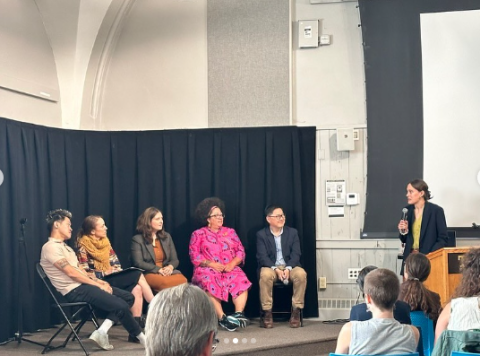
The Environmental Humanities Symposium drew a crowd of students and professors from many disciplines on September 21 and 22 in Curtis Hall.
The keynote speech by poet Tamiko Beyer surprised the public with a mindfulness exercise that set the tone for the whole talk. It prompted the audience to reconnect with the spaces and people around them in order to acknowledge that each person is a part of a whole, grounded in place and community. The poet read a selection of her works and contextualized them to emphasize the intersectional nature of the environmental crisis.
The morning session made the diversity of approaches and perspectives in the Environmental Humanities very tangible and clearly showed concrete outcomes of eco-art, literature, anthropology, and more. From making jewels with repurposed materials to shifting everyday actions to reconsidering Cold War dynamics as a precedent for some of the phenomena we live through today, the session looked at the micro and the macro. Case studies considered a range of geographies (the Americas, Asia, Africa), pondering institutional responses as well as grassroots activism, Indigenous rights and art/science collaborations, mining, extraction, and consumerism, among other topics.
The afternoon session focused on lawns, considering its histories and ecologies, looking at the colonial values and imageries embedded into familiar landscapes on our campus and beyond. Speakers encouraged the public to reimagine lawns thanks to a variety of strategies, including VR technologies and participatory art, guerrilla planting, Indigenous gardens, and even collaborations with moles and bees. The audience was actively involved in dialogues with the speakers, showing, on the one hand, attachment to lawns as spaces for community congregation and entertainment, and on the other hand proposing ways to reduce and reinvent open spaces in order to diversify our local landscape away from monocultures.
The symposium was closed by a touching performance of Indigenous artist Erin Genia, whose character Earthling observed part of the afternoon session to then occupy the stage with their presence, distributing plants on the ground, playing music, and moving against a video projection of cloudy skies. This work was a beautiful reminder that humans and other-than-human entities are all interrelated. It poetically presented the simple truth that reciprocal care is a condition for survival and fulfillment.
More photos of this event available on Instagram: